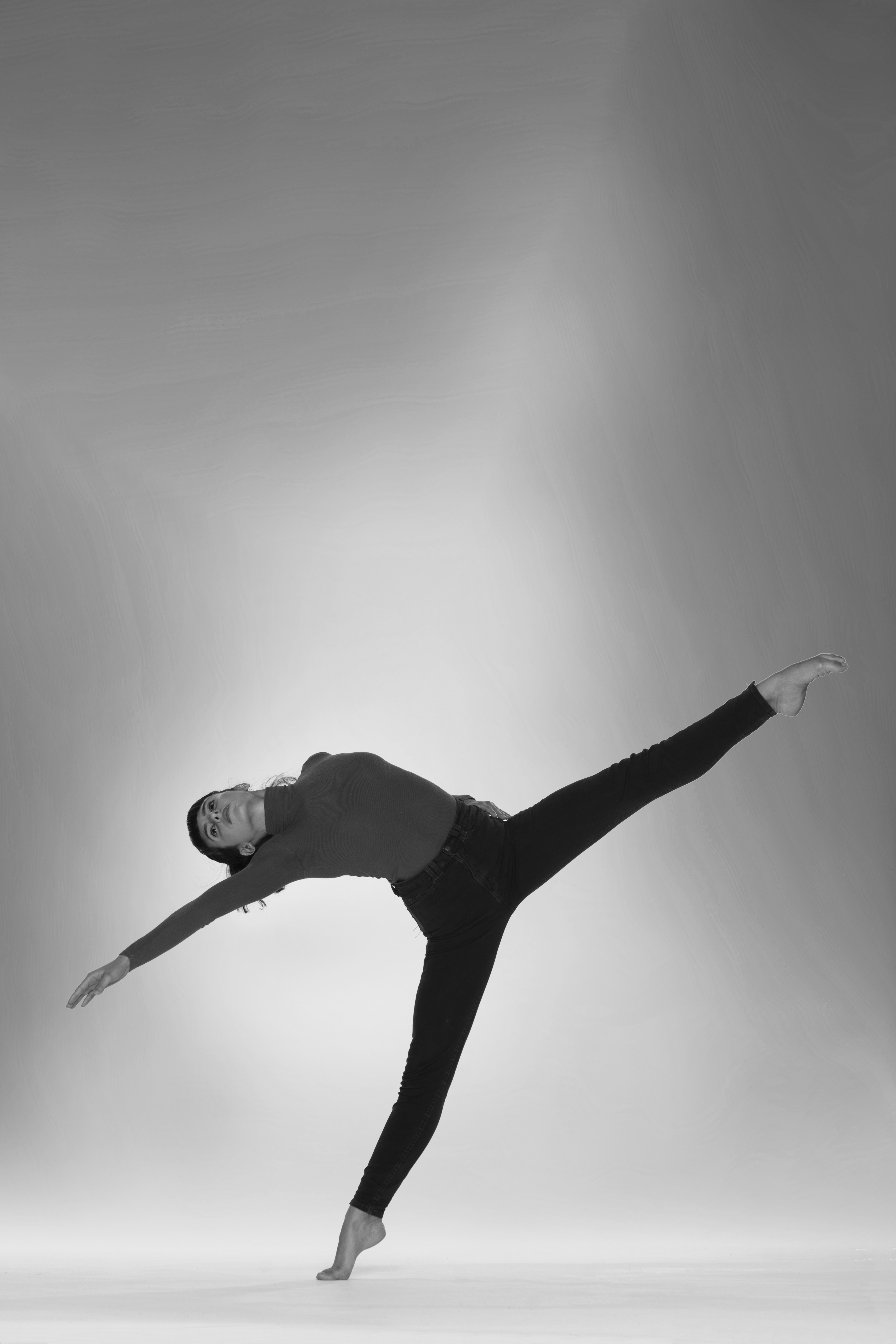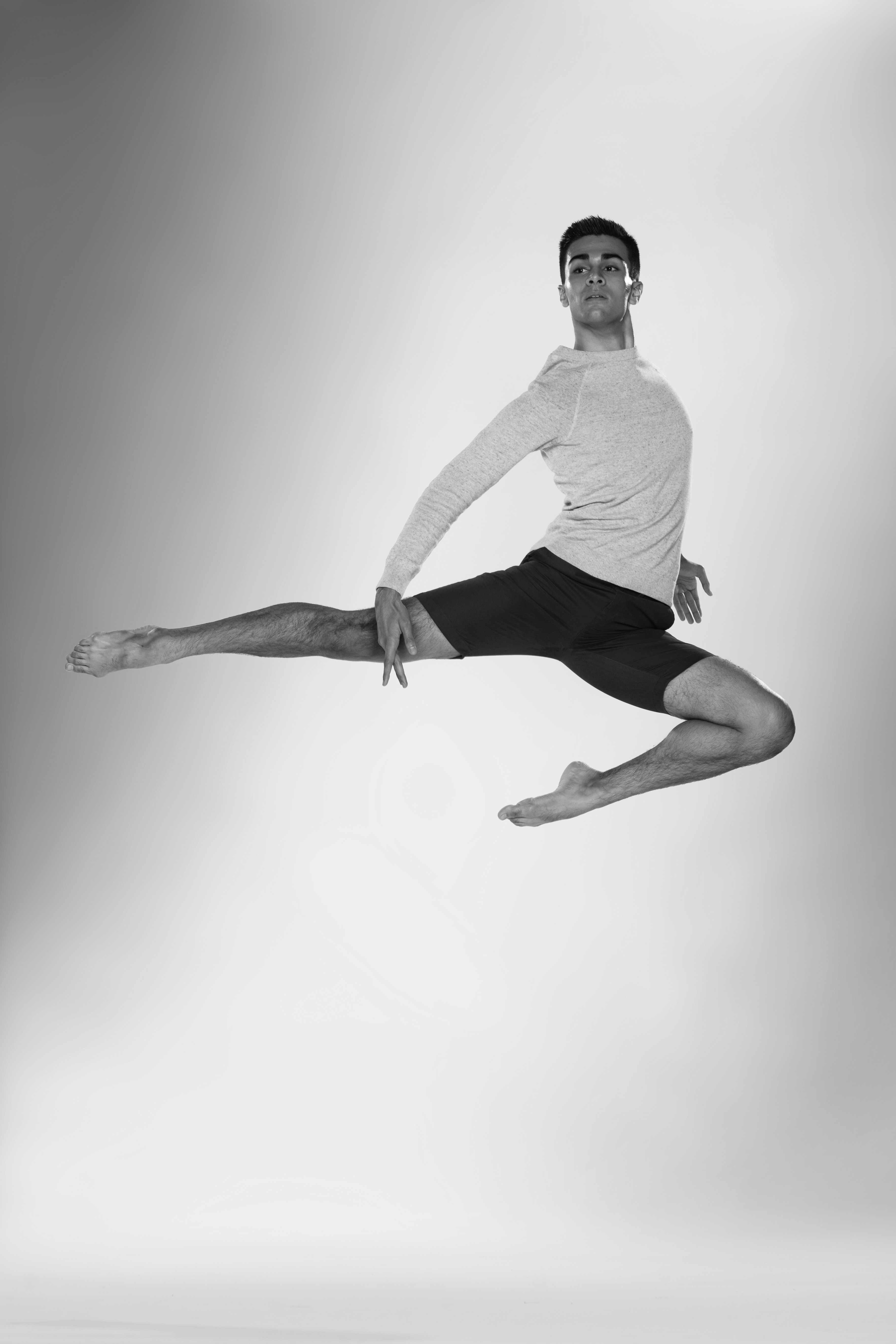Words by Katie Hagan.
Founded in 1982 by then artistic director Bonnie Bird, Trinity Laban’s resident postgraduate outfit Transitions Dance Company comprises 14 dancers from around the globe who complete a rigorous audition process to be part of the company and automatically enrol on the MA/MFA in Dance Performance at Trinity Laban.
Each year, the dancers collaborate with three choreographers to create and subsequently tour a mixed bill of commissioned work. Previous collaborators feature from across the dance stratosphere and include Crystal Pite, Hetain Patel, Theo Clinkard and Henri Oguike to name but a few.
To find out more about the company and its collaboration with this year’s commissions, Dog Kennel Hill Project, Didy Veldman and Rahel Vonmoos, dance art journal grabbed a moment with three Transitions company dancers Claudia Hilda RodrÃguez Pozo, S. Arthur Sicilia and Adrian Lawrence.
DAJ: Why did you decide to join Transitions Dance Company?
Claudia Hilda RodrÃguez Pozo: I am passionate about working from innovative and contemporary approaches and being involved in the creation of choreographic pieces that move away from traditional dance. The MA in Dance Performance (TDC) offered me the opportunity to expand my artistic boundaries and explore my art both practically and theoretically.
S. Arthur Sicilia: I first found Transitions and Trinity Laban when I was looking at undergraduate programs. Being based in the USA, I wasn’t quite ready to move so far away at that time, but I was so drawn to the curriculum. Last year I could feel it was the right timing. I wanted to develop as an academic and professional contemporary dance artist and I knew Transitions was the way to do that.
Adrian Lawrence: I knew that I wanted to continue my dance education after completing my Graduate Diploma in Dance at Trinity Laban, and I was most interested in the masters programmes that offered the chance to work as a dance company. I saw the preview performances of Transitions triple bill in February 2020, while studying, and I really loved the variety of work that they presented.
DAJ: What does a day in the life of a TDC dancer look like?
Arthur: We tend to get to the studio around 9:30 or so to warm-up and condition before a company technique class around 10 in usually contemporary (Release, Limon, Cunningham) or Ballet. From 12 to 6 we are creating or rehearsing work. The late afternoons and evenings are often for costume fittings, tutorials, personal training and research. It’s safe to say we sleep well.
Adrian: We’ve also had guest teachers come in through the year to teach other styles, such as flying low technique for example. We also have other sessions such as research seminars, teaching workshops, we have company meeting every week, costume fittings every two weeks and regular tutorials with our Artistic Director. If there’s any spare time during the day, I might go to the library to work on my dissertation or use Trinity Laban’s conditioning studio to keep my fitness up.
Claudia: In our individual weekly tutorials we can have conversations about our artistic concerns or interests. These open dialogues are focus on making us feel visible and heard, and promoting the artistic strengths of each dancer, which helps us lot with self-confidence.
In addition to all the academic and professional schedule, we always find time to meet, talk, share snacks and have some fun and relaxation.
DAJ: What has it been like to work with Dog Kennel Hill Project, Didy Veldman and Rahel Vonmoos? What has been a highlight for you?
Arthur: Dog Kennel Hill Project focused on physical theatre and voice work. In contrast, Didy Veldman offered what might be called a more traditionally “dancey” piece with the most unison, set choreography, and phrase work of the three works in the programme. But there was still a dialogue between her and the dancers in the creation of the work. We worked with Rahel Vonmoos in a two-part process that focused a lot on shaping a lived environment around the preciousness of touch, a deep exploration of ourselves in the heavy topic of being remembered, and the work of Kafka and Bacon. I have to say having all three pieces in my body and seeing how they inform one another is a highlight.
Adrian: They are all so different from each other, in terms of how they work, and it’s been very enlightening and informative. Some came into the process with a really clear idea of what they wanted from us, whereas others invited more of an exploration and for us to contribute more material. I really appreciate it when choreographers take the time to get to know the company as individuals and how our bodies move. Rahel literally gave me private walking lessons — I felt so honoured!
Claudia: Collaborating with the three creators was based on respect, trust, creative freedom, and collaboration. Working with them has enhanced my versatility as an artist. It has been crucial to be open and vulnerable during the creative processes, as well as deal with the different stylistic proposals, concepts and ways of embodiment.
DAJ: Could you tell DAJ about the tour and programme?
Adrian: Didy Veldman’s ‘Souffle’ is very fun, flirty and romantic, Dog Kennel Hill Project’s ‘Cutting room floor’ uses 70s disaster movies as inspiration, and Rahel Vonmoos’ work is based on the idea of contact with each other and the nature of different encounters that we have with different people throughout our lives. If lockdown rules continue to lift, we hope to be able to tour around the UK from mid-May until the end of June.
Adrian Arthur
DAJ: Why do you dance?
Arthur: In The Red Shoes the main character is asked “why do you dance?” and she responds, “why do you want to live?”. It’s a bit dramatic, but it pretty much says it all — I have to dance. It’s my research, it’s my way of conversing with myself and with others, it’s what I do when I don’t know what else to do.
Adrian: Partially it’s escapism, partly it’s a form of self-expression, but mostly because it just makes me feel incredibly happy.
Claudia: I have danced my whole life; I could not imagine myself without dancing. It allows me to live thousands of lives on stage, allows me to multiply and expand. I dance because it is an essential element of reflection, criticism and evolution celebrates consciousness and intuition around the body, politics, and society.
DAJ: Claudia — As a Chevening Scholar you have said you want to use your art to generate change. Could you explain this more to me?
Claudia: I am interested in the creation of pieces that awaken more questions than answers in the audience. I rather prefer artistic works that invite the audience to collaborate with a critical thinking and not from passive contemplation. When I say that I want to use art to generate change I refer to creating works and generate artistic projects that deal with current real social topics. As a woman artist coming from a Latin heritage, I am committed to highlighting the discourse of minorities through my work. Art instructs, reports, promotes. I strongly believe that art is one of the most powerful transformative tools of societies.
DAJ: How will this experience influence and help you on your dance journey?
Arthur: After even just a few months in TDC I found myself approaching my work with such a new mindset. The program really explores and encourages the collaborative, creative, and researching dancer. I understand how to embody my work and place myself in each form or style without sacrificing my own voice. I think the programme has helped me mature as an artist — I am still myself but with more possibilities and deeper understandings. I’ve had the chance to create and collaborate outside of TDC and have found my TDC experience has broadened my sense of what it means to create. But I think most of all, it has encouraged me to explore and follow that impulse.
If I had to put it into one lesson — which is not an easy task — I would say I’ve learned how to engage. Engage with techniques, material, tasks, research. I’ve learned not just how to do a task, but how to really explore what that task brings out of me and how to find a connection with the material.
Claudia: Something fundamental that I have learned during this experience has been to understand dance and choreography as an intellectual exercise that comprises an active and reflective attitude. I’ve also learnt the importance of generating creative exchange spaces and working on artistic projects collaboratively.
To learn more about Transitions, head to the company’s webpage on Trinity Laban’s website. Images: Chris Nash. Header image is of Claudia.


